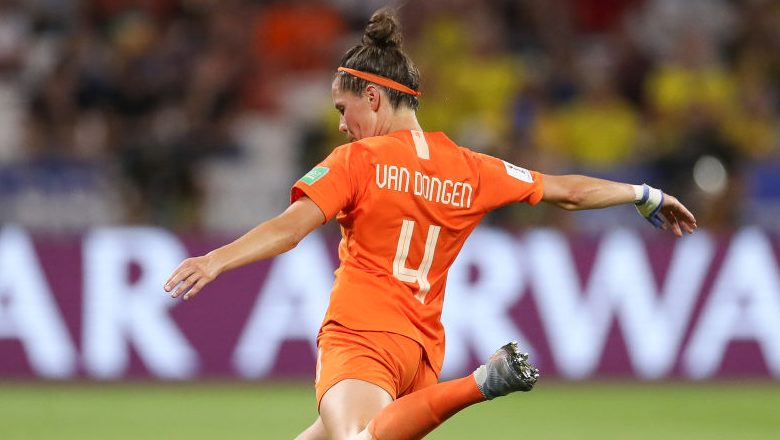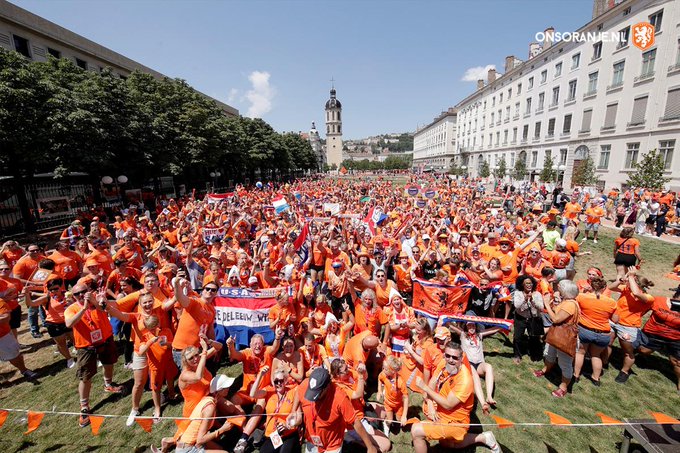
Getty Merel van Dongen of the Netherlands controls the ball during the 2019 FIFA Women's World Cup France Semi Final match between Netherlands and Sweden at Stade de Lyon on July 03, 2019 in Lyon, France.
The United States faces off against the Netherlands Sunday in Lyon in the Women’s World Cup final. The Americans are going for their second straight tournament title, as well as a fourth overall. The Dutch, on the other hand, have never played in a final, as this is just their second-ever appearance in the tournament.
It’s also a matchup between some iconic colors. The Americans sport the white jerseys with the red and white trims, while the Dutch are wearing the all-orange kits. This is par for the course for Oranje Leeuwinnen (“Orange Lionesses”).
According to Dutch Amsterdam, orange is the color of the Royal Family, which hails from the House of Orange-Nassau.
The House of Orange-Nassau (in Dutch: Huis van Oranje-Nassau), a branch of the German House of Nassau, has played a central role in the political life of the Netherlands — and at times in Europe — since William I of Orange (also known as “William the Silent” and “Father of the Fatherland”) organized the Dutch revolt against Spanish rule, which after the Eighty Years’ War led to an independent Dutch state.
The Netherlands flag is curiously without the color, instead featuring red, white and blue stripes. However, Trip Savvy notes that many think this wasn’t always the case.
And according to some historians, the middle stripe (or fess) of the Dutch flag was originally orange, but legend has it that the orange dye was too unstable. Since the stripes would turn red a short time after a flag was made, the story goes, red became the stripe’s official color.
Dutch fans have worn orange to support their teams during World Cup soccer tournaments since about 1934. This fandom has extended to orange t-shirts, hats, scarves, cars, houses, shops, and even streets. Trip Savvy also notes that KLM Royal Dutch Airlines went so far as to paint one of its Boeing 777 airplanes orange.
Dutch Women’s Team Logo Undergoes Sex Change
According to Emma Tucker at De Zeen, the Dutch women’s national team logo was changed in July 2017 to represent a lioness rather than a male lion. Wieden+Kennedy Amsterdam worked with Nike to make the change ahead of the UEFA Women’s European Championship, which was hosted in the Netherlands.
The design echoes the team’s nickname Oranje Leeuwinnen, which translates as Orange Lionesses. It is similar in shape to the Royal Dutch Football Association (KNVB) crest, but the mane and shaggy tail are replaced with sleeker fur.
“They have been called lionesses for the past 46 years, so it was a natural fit to give them a crest that was born out of who they are, and how they play,” said W+K Amsterdam creative director Craig Williams. “When redesigning the logo, we simply removed some elements which made it elegant yet still recognisable as the KNVB emblem and remained unmistakably Dutch.”
“A lioness is a symbol of power, strength, elegance and agility,” he added. “It’s a tribute to how they play and celebrates the history of the team as well as the future.”

